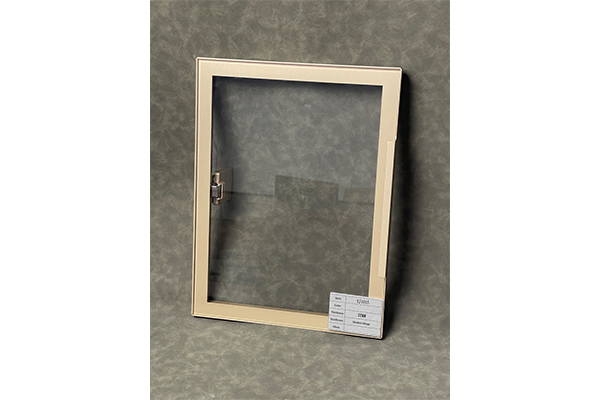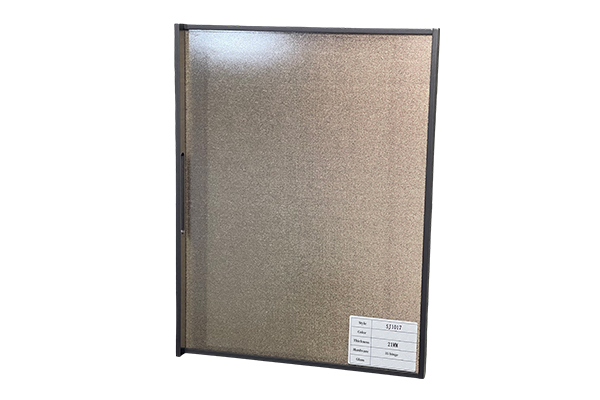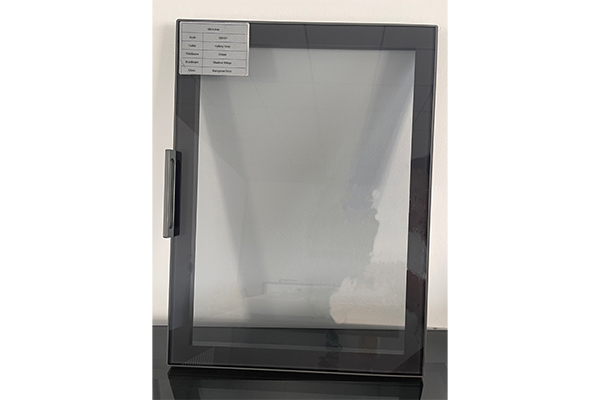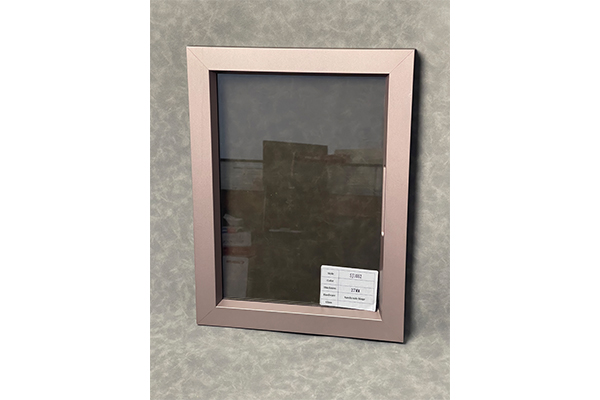How does the aluminum frame glass door achieve lightweight design while ensuring structural strength?
Release Time : 2025-04-16
With its unique material combination and design, the aluminum frame glass door successfully achieves the perfect combination of lightweight and structural strength. This not only meets the needs of modern architectural design for beauty and functionality, but also ensures safety and durability in use.
First of all, in terms of material selection, aluminum alloy is a key factor in achieving this goal. Compared with traditional metal materials such as steel, aluminum alloy has a significant weight advantage, and its density is only about one-third of that of steel, which means that aluminum alloy is lighter in the same volume. However, this does not mean that strength is sacrificed. In fact, through special alloy formulas and processing techniques, aluminum alloys can meet or even exceed the strength standards of some steels. For example, adding elements such as magnesium and silicon can enhance the hardness and tensile strength of aluminum alloys, making the resulting frame both strong and light.
In addition to the advantages of the material itself, the design of the aluminum frame also plays a vital role. Modern manufacturing technology allows designers to precisely control the thickness and shape of the aluminum frame to optimize its load-bearing capacity. Usually, the interior of the aluminum frame will adopt a hollow or multi-chamber design. This structure can not only reduce the overall weight, but also effectively increase the rigidity and stability of the frame. The hollow part can also be filled with insulation materials or gas to further improve the overall performance of the door, such as thermal insulation. In addition, surface treatment technologies such as anodizing or powder coating can not only improve the appearance texture, but also enhance the corrosion resistance and wear resistance of aluminum alloys and extend the service life.
Furthermore, the choice of glass also affects the overall performance of the aluminum frame glass door. In order to match the lightweight aluminum frame, high-strength safety glass such as tempered glass or laminated glass is often used. Although these types of glass are thinner than ordinary glass, they are stronger and will not form sharp fragments when broken, which greatly improves safety. More importantly, they can provide sufficient support while maintaining transparency to ensure the integrity of the entire door structure. Moreover, with the development of glass manufacturing technology, new materials that are lighter but not less strong can now be produced, providing more possibilities for the design of aluminum frame glass doors.
In terms of connection methods, aluminum frame glass door uses precise mechanical connectors instead of welding, which not only ensures the firmness of the connection parts, but also avoids deformation or stress concentration caused by welding. For example, using corners to reinforce the corners can not only enhance the structural strength, but also simplify the installation process, making adjustment and maintenance easier. At the same time, this connection method also allows the door frame size to be flexibly adjusted as needed, improving the adaptability and versatility of the product.
Finally, it is worth mentioning that the design concept of aluminum frame glass door always revolves around the needs of users. Whether it is the pursuit of extreme simplicity of modern style or the ecological design that emphasizes natural lighting and the coherence of indoor and outdoor spaces, suitable solutions can be found. Through careful selection of materials, optimized structural design and innovative manufacturing processes, aluminum frame glass door not only achieves the goal of lightweight, but also ensures the necessary structural strength and long service life. This makes it an indispensable part of the field of contemporary architectural decoration, showing infinite charm in both residential projects and commercial spaces.
First of all, in terms of material selection, aluminum alloy is a key factor in achieving this goal. Compared with traditional metal materials such as steel, aluminum alloy has a significant weight advantage, and its density is only about one-third of that of steel, which means that aluminum alloy is lighter in the same volume. However, this does not mean that strength is sacrificed. In fact, through special alloy formulas and processing techniques, aluminum alloys can meet or even exceed the strength standards of some steels. For example, adding elements such as magnesium and silicon can enhance the hardness and tensile strength of aluminum alloys, making the resulting frame both strong and light.
In addition to the advantages of the material itself, the design of the aluminum frame also plays a vital role. Modern manufacturing technology allows designers to precisely control the thickness and shape of the aluminum frame to optimize its load-bearing capacity. Usually, the interior of the aluminum frame will adopt a hollow or multi-chamber design. This structure can not only reduce the overall weight, but also effectively increase the rigidity and stability of the frame. The hollow part can also be filled with insulation materials or gas to further improve the overall performance of the door, such as thermal insulation. In addition, surface treatment technologies such as anodizing or powder coating can not only improve the appearance texture, but also enhance the corrosion resistance and wear resistance of aluminum alloys and extend the service life.
Furthermore, the choice of glass also affects the overall performance of the aluminum frame glass door. In order to match the lightweight aluminum frame, high-strength safety glass such as tempered glass or laminated glass is often used. Although these types of glass are thinner than ordinary glass, they are stronger and will not form sharp fragments when broken, which greatly improves safety. More importantly, they can provide sufficient support while maintaining transparency to ensure the integrity of the entire door structure. Moreover, with the development of glass manufacturing technology, new materials that are lighter but not less strong can now be produced, providing more possibilities for the design of aluminum frame glass doors.
In terms of connection methods, aluminum frame glass door uses precise mechanical connectors instead of welding, which not only ensures the firmness of the connection parts, but also avoids deformation or stress concentration caused by welding. For example, using corners to reinforce the corners can not only enhance the structural strength, but also simplify the installation process, making adjustment and maintenance easier. At the same time, this connection method also allows the door frame size to be flexibly adjusted as needed, improving the adaptability and versatility of the product.
Finally, it is worth mentioning that the design concept of aluminum frame glass door always revolves around the needs of users. Whether it is the pursuit of extreme simplicity of modern style or the ecological design that emphasizes natural lighting and the coherence of indoor and outdoor spaces, suitable solutions can be found. Through careful selection of materials, optimized structural design and innovative manufacturing processes, aluminum frame glass door not only achieves the goal of lightweight, but also ensures the necessary structural strength and long service life. This makes it an indispensable part of the field of contemporary architectural decoration, showing infinite charm in both residential projects and commercial spaces.







